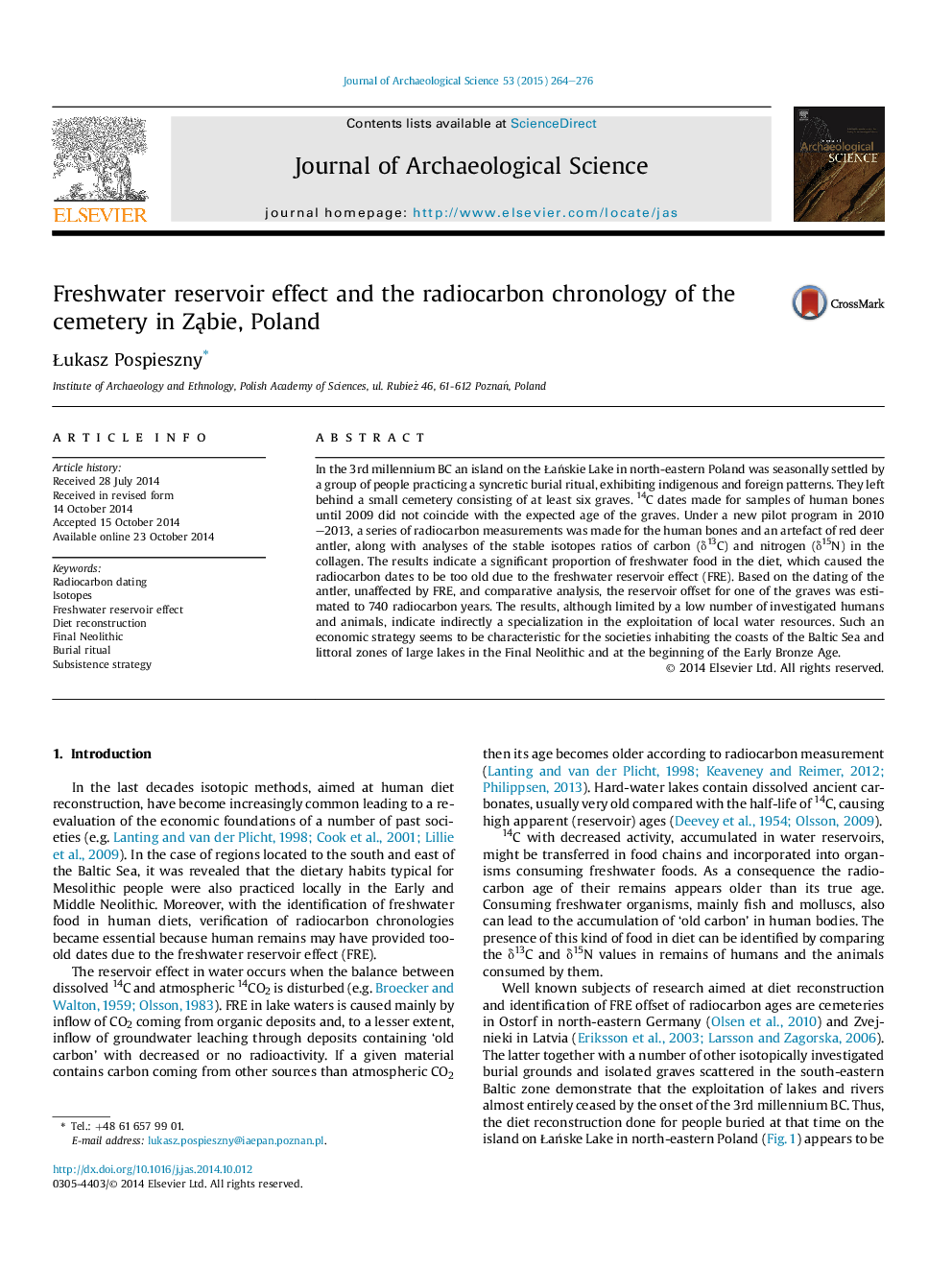| کد مقاله | کد نشریه | سال انتشار | مقاله انگلیسی | نسخه تمام متن |
|---|---|---|---|---|
| 7442544 | 1483907 | 2015 | 13 صفحه PDF | دانلود رایگان |
عنوان انگلیسی مقاله ISI
Freshwater reservoir effect and the radiocarbon chronology of the cemetery in ZÄ
bie, Poland
دانلود مقاله + سفارش ترجمه
دانلود مقاله ISI انگلیسی
رایگان برای ایرانیان
کلمات کلیدی
موضوعات مرتبط
مهندسی و علوم پایه
مهندسی مواد
دانش مواد (عمومی)
پیش نمایش صفحه اول مقاله

چکیده انگلیسی
In the 3rd millennium BC an island on the ÅaÅskie Lake in north-eastern Poland was seasonally settled by a group of people practicing a syncretic burial ritual, exhibiting indigenous and foreign patterns. They left behind a small cemetery consisting of at least six graves. 14C dates made for samples of human bones until 2009 did not coincide with the expected age of the graves. Under a new pilot program in 2010-2013, a series of radiocarbon measurements was made for the human bones and an artefact of red deer antler, along with analyses of the stable isotopes ratios of carbon (δ13C) and nitrogen (δ15N) in the collagen. The results indicate a significant proportion of freshwater food in the diet, which caused the radiocarbon dates to be too old due to the freshwater reservoir effect (FRE). Based on the dating of the antler, unaffected by FRE, and comparative analysis, the reservoir offset for one of the graves was estimated to 740 radiocarbon years. The results, although limited by a low number of investigated humans and animals, indicate indirectly a specialization in the exploitation of local water resources. Such an economic strategy seems to be characteristic for the societies inhabiting the coasts of the Baltic Sea and littoral zones of large lakes in the Final Neolithic and at the beginning of the Early Bronze Age.
ناشر
Database: Elsevier - ScienceDirect (ساینس دایرکت)
Journal: Journal of Archaeological Science - Volume 53, January 2015, Pages 264-276
Journal: Journal of Archaeological Science - Volume 53, January 2015, Pages 264-276
نویسندگان
Åukasz Pospieszny,